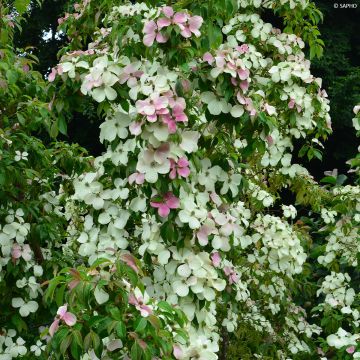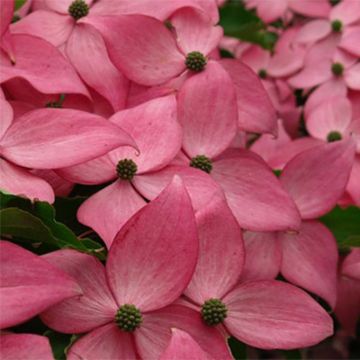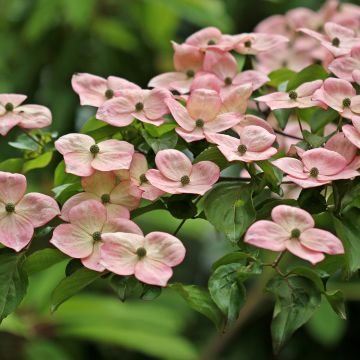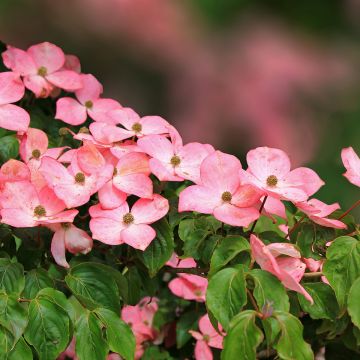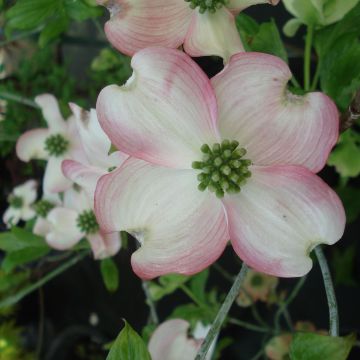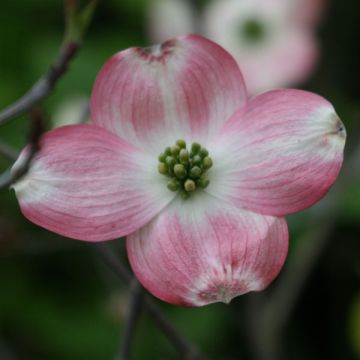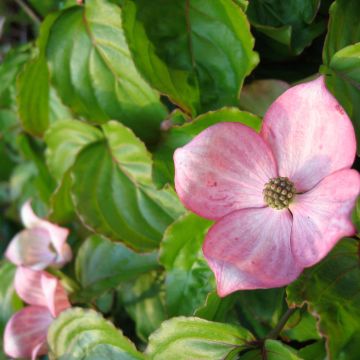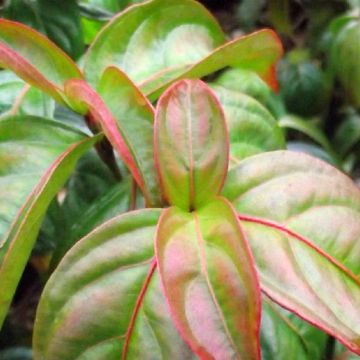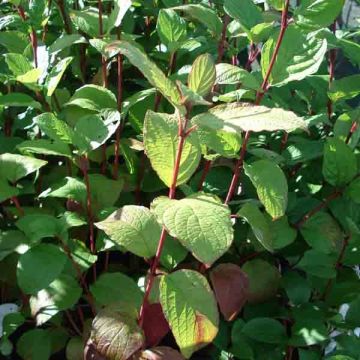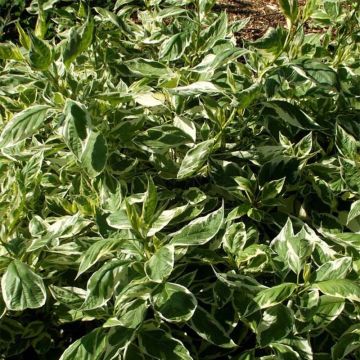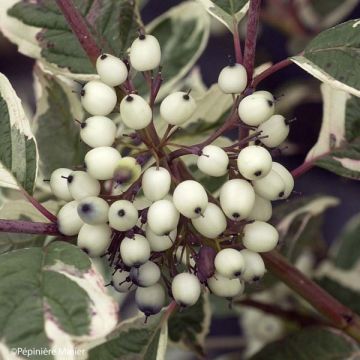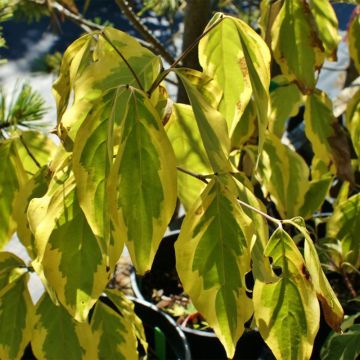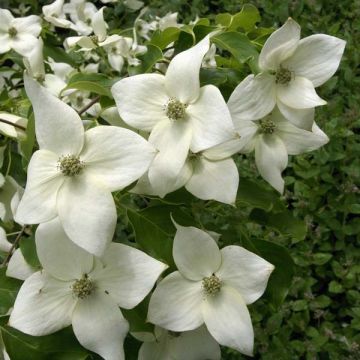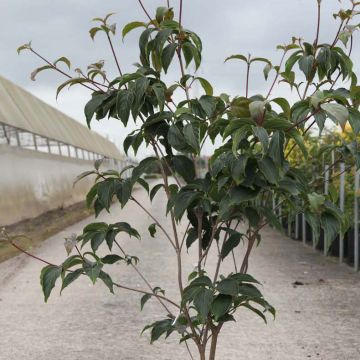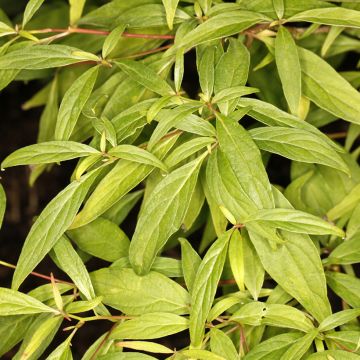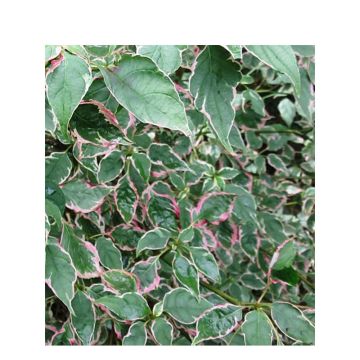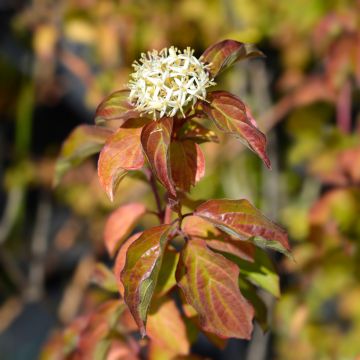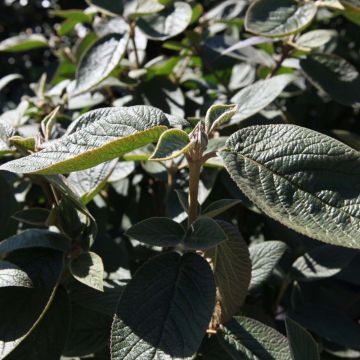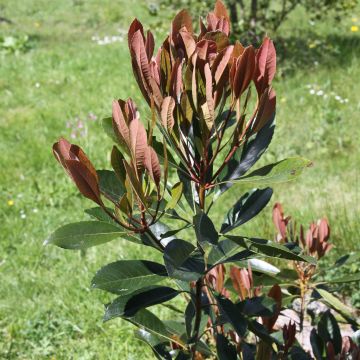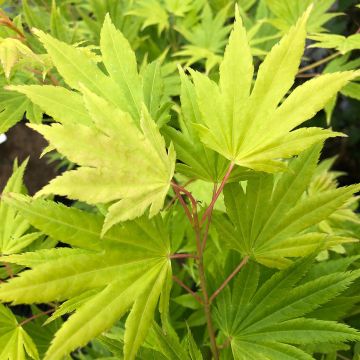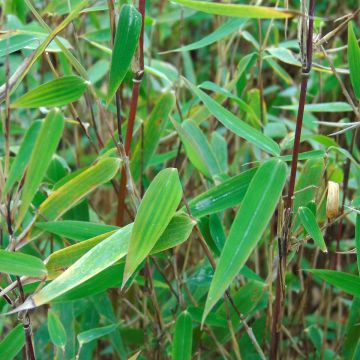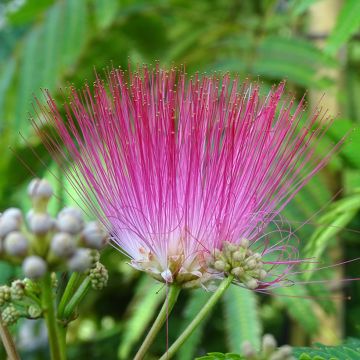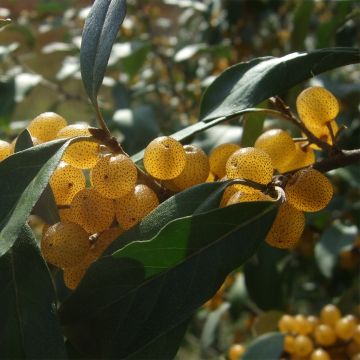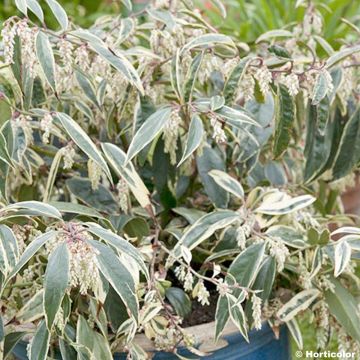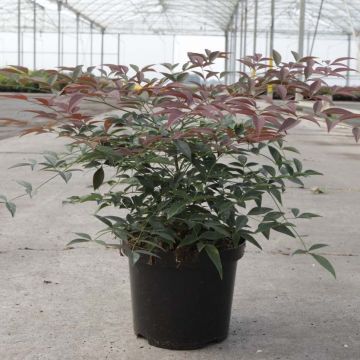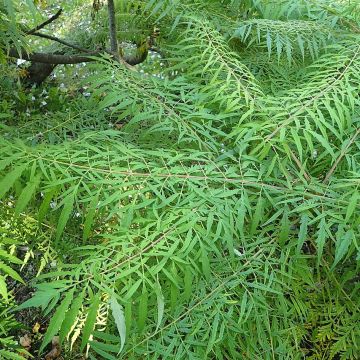

Cornus kousa Beni-fuji - Kousa Dogwood


Cornus kousa Beni-fuji - Kousa Dogwood


Cornus kousa Beni-fuji - Kousa Dogwood


Cornus kousa Beni-fuji - Kousa Dogwood
Cornus kousa Beni-fuji - Kousa Dogwood
Cornus kousa Beni-fuji
Kousa Dogwood, Japanese Dogwood, Chinese Dogwood
Why not try an alternative variety in stock?
View all →This plant carries a 24 months recovery warranty
More information
We guarantee the quality of our plants for a full growing cycle, and will replace at our expense any plant that fails to recover under normal climatic and planting conditions.
From €5.90 for pickup delivery and €6.90 for home delivery
Express home delivery from €8.90.
Does this plant fit my garden?
Set up your Plantfit profile →
Description
The Cornus kousa Benifuji is a variety of Japanese Dogwood whose flowering is sure to captivate. Well highlighted by the bright green foliage, with a slightly glossy appearance, the pink star-shaped inflorescences are a sight to behold in spring. In late summer, the flowers turn into decorative red fruits, which pleasantly contrast with the foliage. Finally, in autumn, the leaves turn red and orange, creating a beautiful scene. Ornamental for three-quarters of the year, this shrub truly deserves a place in the garden.
The Dogwood belongs to the relatively unknown family of Cornaceae, which, after several revisions of botanical classification, now only includes the genera Cornus and Alangium. In nature, Cornus kousa is a tree of small stature or a large shrub, growing in Japan, China, and Korea. Its graphic silhouette, formed by generally tiered and horizontal branches, gives it a very Japanese look.
Benifuji (or Beni-Fuji) comes from a natural seedling collected on the southeast slopes of Mount Fuji in Japan, hence its name, at an altitude between 800 and 1000 m. Three Japanese nurserymen launched a mass selection in 1970 and isolated this natural variety in 1978, which they believed deserved to be introduced to the market. They identified an interesting concentration of red pigments, which is evident in the trunk and flowering. After years of observation and propagation to ensure the stability of the variety, they finally patented it in 1994.
This slow to moderate-growing shrub can reach, under favourable conditions, a height of 3 m to 3.50 m in 10 years, with a width of 2 m to 2.50 m. It has a rather upright habit, which may gradually widen with age. After 20 years in the ground, its height will approach 4 m to 4.50 m. The branches are upright at a 45° angle and form a fairly dense vegetation. The medium-sized leaves, slightly smaller than the species-type C. Kousa, are lanceolate, measuring an average of 8 cm long (7 to 11 cm) and 4.2 cm wide (3.5 to 5 cm). They have a glossy appearance and a dark green colour.
From May to June, beautiful star-shaped inflorescences with four branches are formed, consisting of a central cluster surrounded by colourful bracts. The cluster is made up of small true flowers closely packed together, with a greenish colour. The bracts are transformed leaves, which are often mistaken for flowers because they are the ornamental part. In Benifuji, they take on a deep pink colour from the moment they appear, with a pointed oval shape at the tip. Very floriferous, this shrub is one of the most beautiful spring spectacles. In late summer, the fruits turn red, resembling blackberries or strawberries, and can be eaten when ripe in September (birds also enjoy them!). They are quite decorative against the darker foliage, which, a month later, takes on beautiful autumnal colours, turning red and orange, sometimes even purple.
The Cornus kousa Benifuji requires little maintenance, is resistant to diseases, and does not need to be pruned. Just remember to water it during hot periods to prevent the soil from drying out. It will be perfect in a heather soil flower bed, planted in the second row. At its base, plant low shrubs such as Andromeda polifolia Nikko, a charming ground cover with very fine dark green foliage, which is covered in small white bells from April to June. To extend the flowering period of your flower bed, consider the Skimmia reevesiana, a small evergreen shrub that combines the attraction of ornamental dark green foliage all year round, a fragrant white-pinkish flowering in March-April, and a very decorative red fruiting in autumn and winter. And to also have flowers in summer, choose a beautiful Hydrangea such as the Hydrangea paniculata Bloody Mary with large creamy-white inflorescences that gradually turn deep red.
Report an error about the product description
Cornus kousa Beni-fuji - Kousa Dogwood in pictures


Plant habit
Flowering
Foliage
Botanical data
Cornus
kousa
Beni-fuji
Cornaceae
Kousa Dogwood, Japanese Dogwood, Chinese Dogwood
Cultivar or hybrid
Other Cornus
Planting and care
This Cornus kousa Benifuji appreciates a soil rich in organic matter, moist to wet, but well-drained, as well as a soil with an acidic to neutral pH. Hardy and able to withstand temperatures as low as -20°C, a sheltered location from cold and drying winter winds should be preferred. Young plants may be slightly affected by frost. It thrives in full sun to partial shade, ideally benefiting from morning sun and some afternoon shade to avoid excessive sunlight, especially in hot climates. Planting can be done in spring or autumn. Soak the root ball in a bucket of water for fifteen minutes to ensure proper hydration. During this time, dig a planting hole 50 or 60 cm in width and depth, and mix a bag of planting compost with the existing soil. Place the root ball in the soil, backfill around it, and water thoroughly. Provide regular watering during the first two years, and during hot periods thereafter.
Planting period
Intended location
Care
This item has not been reviewed yet - be the first to leave a review about it.
Striking foliage shrubs
Haven't found what you were looking for?
Hardiness is the lowest winter temperature a plant can endure without suffering serious damage or even dying. However, hardiness is affected by location (a sheltered area, such as a patio), protection (winter cover) and soil type (hardiness is improved by well-drained soil).

Photo Sharing Terms & Conditions
In order to encourage gardeners to interact and share their experiences, Promesse de fleurs offers various media enabling content to be uploaded onto its Site - in particular via the ‘Photo sharing’ module.
The User agrees to refrain from:
- Posting any content that is illegal, prejudicial, insulting, racist, inciteful to hatred, revisionist, contrary to public decency, that infringes on privacy or on the privacy rights of third parties, in particular the publicity rights of persons and goods, intellectual property rights, or the right to privacy.
- Submitting content on behalf of a third party;
- Impersonate the identity of a third party and/or publish any personal information about a third party;
In general, the User undertakes to refrain from any unethical behaviour.
All Content (in particular text, comments, files, images, photos, videos, creative works, etc.), which may be subject to property or intellectual property rights, image or other private rights, shall remain the property of the User, subject to the limited rights granted by the terms of the licence granted by Promesse de fleurs as stated below. Users are at liberty to publish or not to publish such Content on the Site, notably via the ‘Photo Sharing’ facility, and accept that this Content shall be made public and freely accessible, notably on the Internet.
Users further acknowledge, undertake to have ,and guarantee that they hold all necessary rights and permissions to publish such material on the Site, in particular with regard to the legislation in force pertaining to any privacy, property, intellectual property, image, or contractual rights, or rights of any other nature. By publishing such Content on the Site, Users acknowledge accepting full liability as publishers of the Content within the meaning of the law, and grant Promesse de fleurs, free of charge, an inclusive, worldwide licence for the said Content for the entire duration of its publication, including all reproduction, representation, up/downloading, displaying, performing, transmission, and storage rights.
Users also grant permission for their name to be linked to the Content and accept that this link may not always be made available.
By engaging in posting material, Users consent to their Content becoming automatically accessible on the Internet, in particular on other sites and/or blogs and/or web pages of the Promesse de fleurs site, including in particular social pages and the Promesse de fleurs catalogue.
Users may secure the removal of entrusted content free of charge by issuing a simple request via our contact form.
The flowering period indicated on our website applies to countries and regions located in USDA zone 8 (France, the United Kingdom, Ireland, the Netherlands, etc.)
It will vary according to where you live:
- In zones 9 to 10 (Italy, Spain, Greece, etc.), flowering will occur about 2 to 4 weeks earlier.
- In zones 6 to 7 (Germany, Poland, Slovenia, and lower mountainous regions), flowering will be delayed by 2 to 3 weeks.
- In zone 5 (Central Europe, Scandinavia), blooming will be delayed by 3 to 5 weeks.
In temperate climates, pruning of spring-flowering shrubs (forsythia, spireas, etc.) should be done just after flowering.
Pruning of summer-flowering shrubs (Indian Lilac, Perovskia, etc.) can be done in winter or spring.
In cold regions as well as with frost-sensitive plants, avoid pruning too early when severe frosts may still occur.
The planting period indicated on our website applies to countries and regions located in USDA zone 8 (France, United Kingdom, Ireland, Netherlands).
It will vary according to where you live:
- In Mediterranean zones (Marseille, Madrid, Milan, etc.), autumn and winter are the best planting periods.
- In continental zones (Strasbourg, Munich, Vienna, etc.), delay planting by 2 to 3 weeks in spring and bring it forward by 2 to 4 weeks in autumn.
- In mountainous regions (the Alps, Pyrenees, Carpathians, etc.), it is best to plant in late spring (May-June) or late summer (August-September).
The harvesting period indicated on our website applies to countries and regions in USDA zone 8 (France, England, Ireland, the Netherlands).
In colder areas (Scandinavia, Poland, Austria...) fruit and vegetable harvests are likely to be delayed by 3-4 weeks.
In warmer areas (Italy, Spain, Greece, etc.), harvesting will probably take place earlier, depending on weather conditions.
The sowing periods indicated on our website apply to countries and regions within USDA Zone 8 (France, UK, Ireland, Netherlands).
In colder areas (Scandinavia, Poland, Austria...), delay any outdoor sowing by 3-4 weeks, or sow under glass.
In warmer climes (Italy, Spain, Greece, etc.), bring outdoor sowing forward by a few weeks.

































